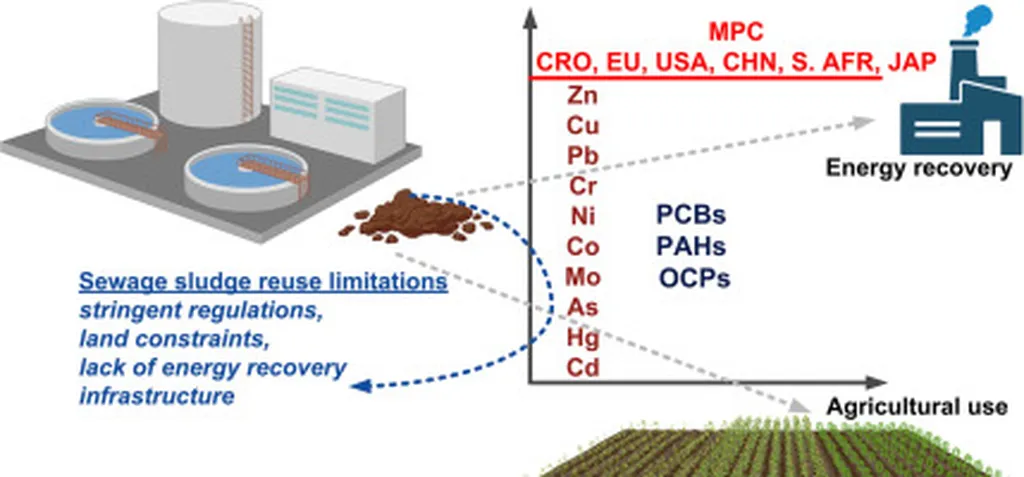In the heart of Croatia, a silent transformation is taking place, one that could redefine how we perceive and utilize waste. Researchers from the Faculty of Agriculture at the University of Zagreb have been diligently monitoring the composition of sewage sludge (SS) from the country’s largest wastewater treatment plant (WWTP) in Zagreb. Their findings, published in the journal *Energy Nexus*, reveal that this often-overlooked byproduct of wastewater treatment could be a valuable resource for agriculture and energy recovery.
Sewage sludge, once a mere waste management challenge, is now being recognized for its potential as a renewable resource. “Properly treated SS can provide a high-calorific fuel for energy, essential nutrients for crops, and even rare metal(oid)s for various industries,” explains lead author Gabrijel Ondrasek. This shift in perspective aligns with the principles of a circular economy, where waste is minimized, and resources are kept in use for as long as possible.
The study assessed long-term monitoring data on the physicochemical properties of anaerobically digested SS. The results are promising: the key characteristics of the examined SS meet the criteria for energy recovery and reuse in agriculture. Moreover, the most critical parameters—organic micro-pollutants and heavy metal(oid)s—were found to be within acceptable limits and compliant with stringent international standards for agricultural use, composting, organic fertilizers, or soil amendments.
Most of these indicators demonstrated stable or decreasing trends over time, suggesting that the quality of SS is improving or maintaining high standards. However, the practical reuse of SS for agricultural application or energy recovery remains negligible at regional and national levels. This underutilization is driven by several factors, including stringent regulatory requirements, limited infrastructure for thermal conversion, the scarcity of suitable agricultural land near WWTPs, and the prevalence of land-use restrictions.
The commercial impacts for the agriculture sector are significant. With the global push towards sustainable and circular practices, the potential for SS to provide essential nutrients for crops could revolutionize farming practices. “The stable or decreasing trends in critical parameters suggest that SS could be a reliable and sustainable source of nutrients for crops,” Ondrasek notes. This could lead to reduced dependence on synthetic fertilizers, lower production costs, and improved soil health.
The research also highlights the potential for SS to contribute to energy recovery. As the world seeks to transition towards renewable energy sources, the high-calorific value of SS could be harnessed to produce energy, further contributing to a circular economy.
The findings of this study provide critical insights into SS quality trends, supporting evidence-based, region-specific strategies for its safe and sustainable reuse. As Ondrasek and his team continue to monitor and analyze the composition of SS, their work could shape future developments in waste management, agriculture, and energy recovery.
In a world grappling with waste management challenges and seeking sustainable solutions, the transformation of sewage sludge from a hazardous waste to a valuable resource offers a glimmer of hope. As Ondrasek and his colleagues at the Faculty of Agriculture, University of Zagreb, continue to unravel the complexities of SS composition and reuse, their work could pave the way for a more sustainable and circular future.

